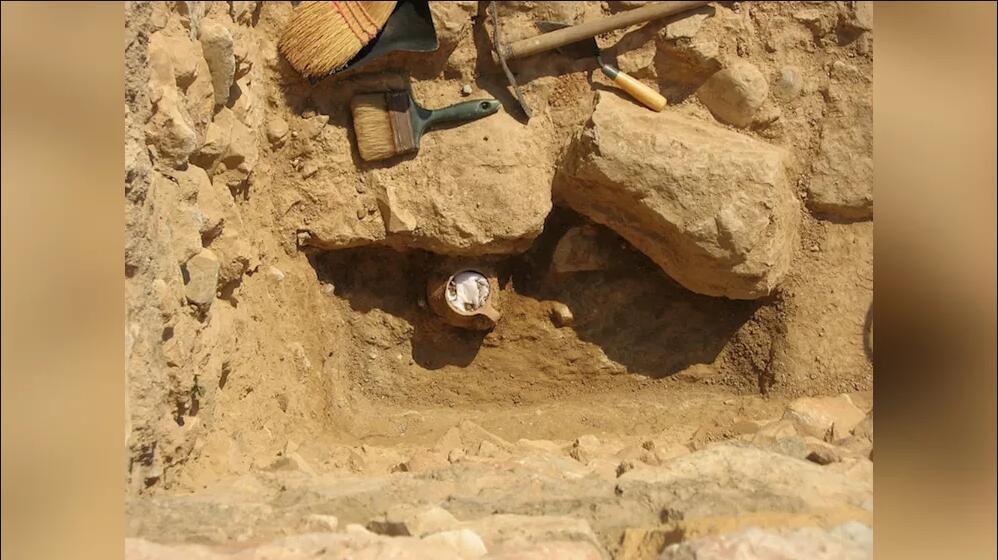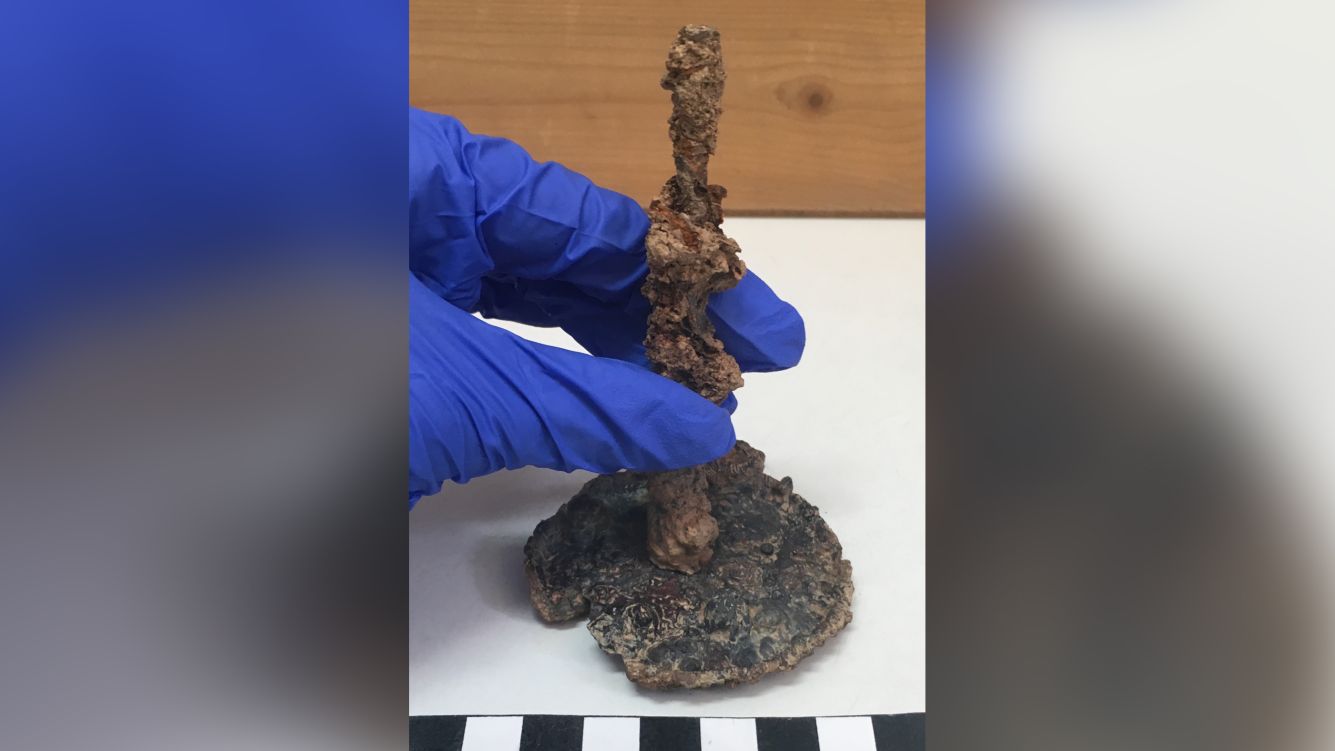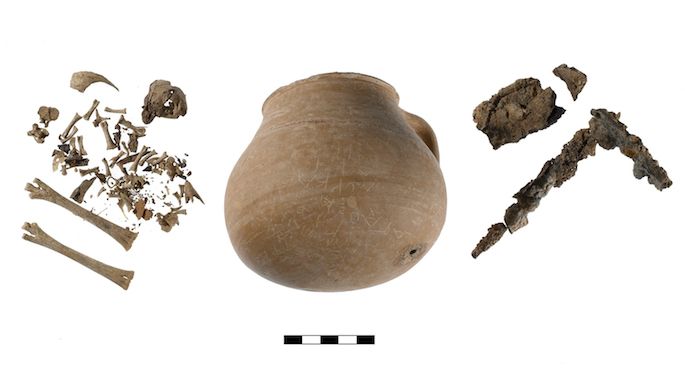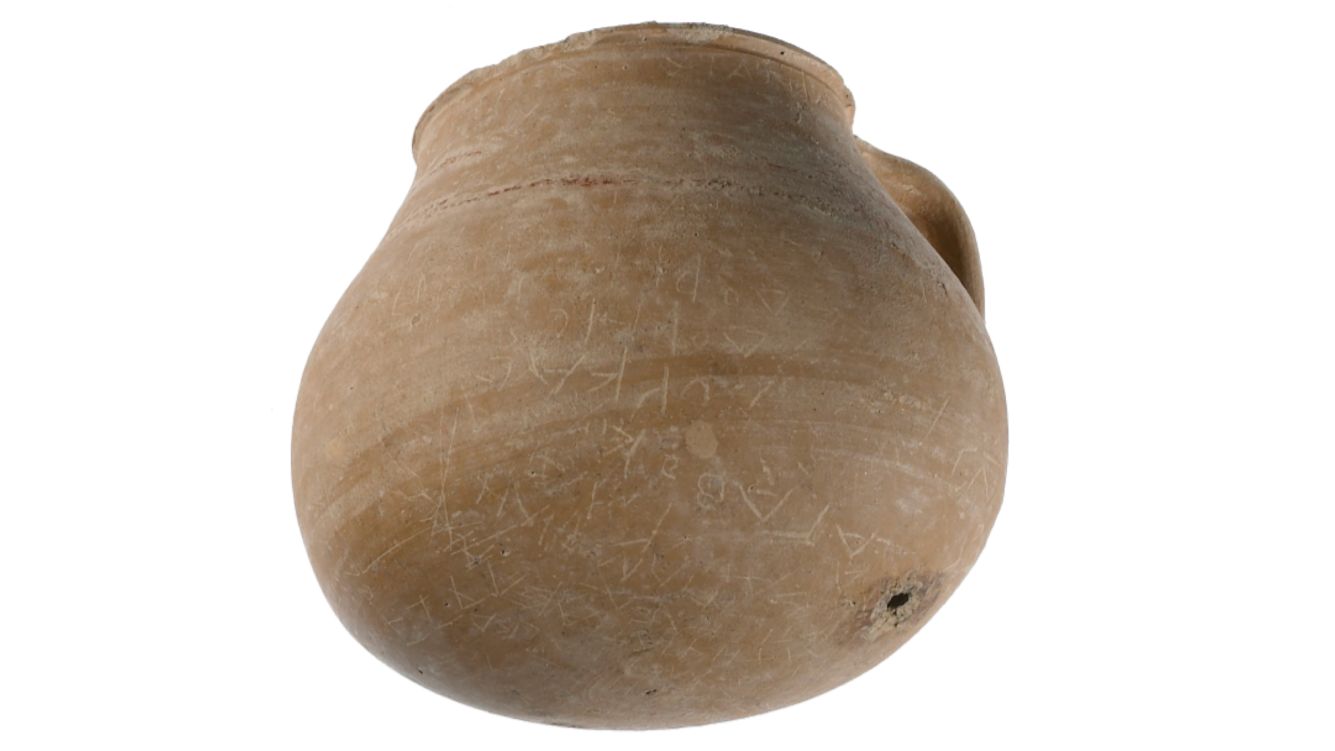A 2,300-year-old ceramic jar filled with the bones of a dismembered chicken was likely part of an ancient curse to paralyze and kill 55 people in ancient Athens, archaeologists say. The finding reveals new evidence for how people tried to use "magic" in the city.
They discovered the jar, along with a coin, beneath the floor of the Agora's Classical Commercial Building, which was used by ancient craftspeople. "The pot contained the dismembered head and lower limbs of a young chicken," Jessica Lamont, a classics professor at Yale University, wrote in an article published in the journal Hesperia.
At the time, around 300 B.C., the people who made the curse also gouged a large iron nail through the vessel.
"All exterior surfaces of the [jar] were originally covered with text; it once carried over 55 inscribed names, dozens of which now survive only as scattered, floating letters or faint stylus strokes" Lamont wrote, noting that the Greek writing contains words that may mean "we bind." The nail and chicken parts likely played a role in the curse. Nails are commonly found with ancient curses and "had an inhibiting force and symbolically immobilized or restrained the faculties of [the curse's] victims," Lamont wrote.
The chicken was no older than 7 months when it was killed, and the people who created the curse may have wanted to transfer "the chick's helplessness and inability to protect itself" to the people whose names are inscribed on the jar, Lamont wrote. The presence of the chicken's head and lower legs in the jar suggests that "by twisting off and piercing the head and lower legs of the chicken, the curse composers sought to incapacitate the use of those same body parts in their victims," Lamont wrote.
"The ritual assemblage belongs to the realm of Athenian binding curses and aimed to 'bind' or inhibit the physical and cognitive faculties of the named individuals," Lamont wrote. The jar was placed near several burned pyres that contained animal remains — something that may have enhanced the curse's power, according to Lamont.
Why was the curse created?
The style of the handwriting on the jar suggests that at least two individuals wrote the names on the jar, Lamont said. "It was certainly composed by people/persons with good knowledge of how to cast a powerful curse," Lamont told Live Science in an email. Why they went to the trouble of creating such an elaborate curse is not certain, but it may have been related to a legal case.
"The sheer number of names makes an impending lawsuit the most likely scenario," Lamont wrote, noting that "curse composers might cite all imaginable opponents in their maledictions, including the witnesses, families and supporters of the opposition." Trials were common at the time in Athens and galvanized a lot of the public, according to Lamont.
The jar's location — a building used by craftspeople — suggests that the lawsuit may have involved a workplace dispute. "The curse could have been created by craftspersons working in the industrial building itself, perhaps in the lead-up to a trial concerning an inter-workplace conflict," Lamont wrote.
Another possibility is that the curse is related to the strife in Athens around 2,300 years ago. After Alexander the Great died in 323 B.C., his empire collapsed and his generals and officials fought for power. Historical records show that several factions fought for control of Athens at the time. It was "a period plagued by war, siege and shifting political alliances," Lamont wrote.
The curse jar was excavated in 2006 and was recently analyzed and deciphered by Lamont. Excavation of the jar was overseen by Marcie Handler, who was a doctoral student in classics at the University of Cincinnati at the time.
Originally published on Live Science.







